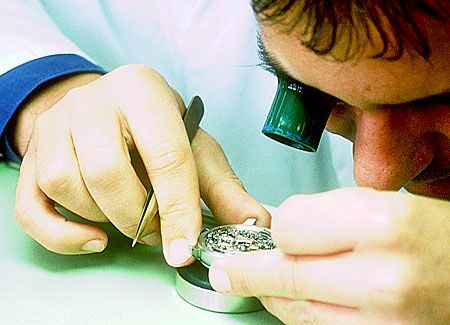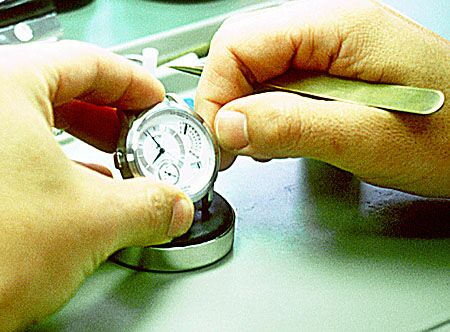
A visit to the Glashuette Original factory
Part 3
|
The workshop where the complicated watches are
assembled |
Assembly of an Alfred Helwig tourbillon |
Finally, we enter the “sacred halls”, where the traditional watchmaking rules. Here the manifold parts produced in the other departments are put together, to finally result in wonderful wristwatches. At the assembly of the mechanical high-end specialities each watchmaker is completely responsible for one watch, from the first screw to the final adjustment and the leather strap. Here the best watchmakers of the company are busy assembling tourbillons, perpetual calendars, and of course the famous PanoRetroGraph.
|
Checking the movement of a PanoRetroGraph |
|
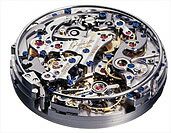
The PanoRetroGraph's cal. 60 movement. Picture © Glashuette Original |
During our visit a watchmaker carried out the final tests on a PanoRetroGraph. Asked, for how long he had worked on it, he succinctly answered: “Five weeks”. Imagine that, five weeks, eight hours a day, only for the assembly! Now add the time and effort necessary to develop and produce all the different watchparts, the time needed to control each of them, and you no longer wonder about the high price – it even strikes you as rather inexpensive! |
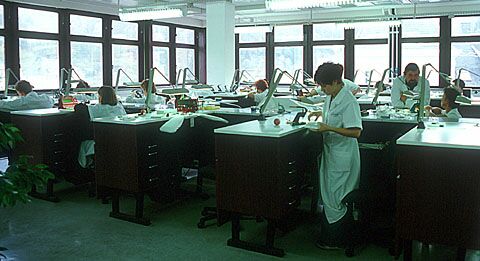
Assembly of the standard Glashuette Original and Union watches |
Another, larger room houses the final assembly of all the “standard” watches of the Glashuette Original and Union labels. Here the only difference to the “specialities chamber” is that not one watchmaker assembles the complete watch from the beginning to the end, but each watchmaker is responsible for a certain group of parts or subassembly. After finishing this work, he transfers this incomplete movement to a colleague who continues where he had stopped. |
|
Our tour through the factory finishes here, yet we still have another highlight to see: the Glashuette museum of watchmaking. Although occupying only two large rooms, this museum covers the complete history of watchmaking in the city of Glashuette. Due to the industry’s unique situation after World War II, the museum owns the archives of all the companies, which were formerly independent but collectivized by the communist government. Since Glashuette Original is the only legal successor of all Glashuette-based companies involved in watch production before 1949, even the archive of the original Lange & Soehne company is part of Glashuette Original's collection, which is now owned by the city. In the near future the museum will move into a more spacious home.
I am very happy to have had the privilege of visit thising fascinating factory, and I would like to thank the Glashuette staff a lot for their friendly cooperation and patience, especially Mrs Boehme, who was such a fantastic tour guide. |
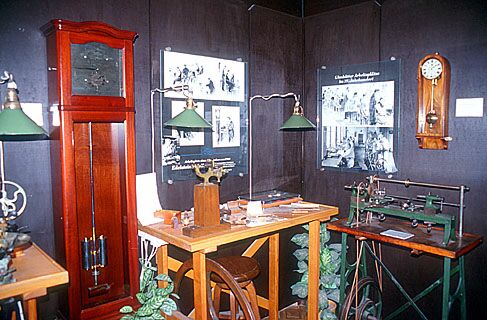
The Glashuette watch museum |
Text and pictures © 2001 Marcus Hanke,
except when noted otherwise


